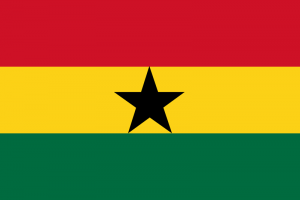Difference between revisions of "Language/Twi/Grammar/Questions-and-Negations"
m (Quick edit) |
m (Quick edit) |
||
| Line 111: | Line 111: | ||
* [[Language/Twi/Grammar/Nouns|Nouns]] | * [[Language/Twi/Grammar/Nouns|Nouns]] | ||
* [[Language/Twi/Grammar/Past-Tense|Past Tense]] | * [[Language/Twi/Grammar/Past-Tense|Past Tense]] | ||
<span class='maj'></span> | |||
==Sources== | |||
* [https://learnakan.com/negation-in-twi/ Negation of Twi Verbs | Twi Grammar | LEARNAKAN] | |||
{{Twi-Page-Bottom}} | {{Twi-Page-Bottom}} | ||
Revision as of 22:20, 22 March 2023
Introduction
In this lesson, you will learn how to form questions and negations in Twi. This is an important part of building your language skills, as it allows you to communicate effectively by asking questions and expressing negation.
Forming Questions in Twi
In Twi, questions are formed by using question words or question particles. The question particles are "hwɛ" or "etɔ" which are equivalent to "do" or "does" in English.
Using Question Words
Question words are words like "who ", "what", "when", "where", "why", and "how", which are used at the beginning of a sentence to form a question.
Here are some common question words in Twi:
| Twi | Pronunciation | English |
|---|---|---|
| yiedyie | jee-jee-ye | what |
| afei | ah-fay-ee | when |
| adeɛ | ah-day | where |
| bɛn | beh-n | which |
| nso yɛfrɛ wo ho | en-so yef-re wo ho | how are you doing? |
To form a question, simply replace the subject with the appropriate question word. For example:
- Yɛware fie. (We went home.)
- Afei yɛware fie? (When did we go home?)
The question word "afei" takes the place of the subject "we" to form the question.
Using Question Particles
Question particles are words that are added to the end of a sentence to indicate that it is a question. In Twi, the question particles are "hwɛ" or "etɔ".
To form a question using a question particle, simply add the particle at the end of the sentence. For example:
- ɔhene yɛnna fufuo nti na ode ne ho ase. (The king ate fufu, so he is full.)
- ɔhene yɛnna fufuo nti na ode ne ho ase hwɛ? (Did the king eat fufu so he is full?)
The question particle "hwɛ" is added at the end of the sentence to indicate that it is a question.
Negating Sentences in Twi
In Twi, negation is achieved by adding the word "nnyɛ" or "nokware" to the beginning of the verb. In English, these words would translate to "not" or "do not".
Here are some examples of negation in Twi:
- Me hu nnyɛ wo. (I do not like you.)
- Wobɛma nokware sɛnea ɔhene yɛmfa. (You will not know when the king comes.)
Practice Exercises
Now that you have learned about forming questions and negations in Twi, it is time to put your knowledge into practice. In the following exercises, convert the affirmative sentences into questions and negations using the methods learned in this lesson.
- Ɛyɛ adɔe na ɔde wo ho ahwɛ.
- Afei ɔde wo ho ahwɛ?
- Nnyɛ ɔde wo ho ahwɛ.
- Yɛpɛ sɛ wobɛtumi bɛyɛ bɔne.
- Yi "wobɛtumi bɛyɛ bɔne" yɛn?
- Nnyɛpɛ sɛ wobɛtumi bɛyɛ bɔne.
Conclusion
In this lesson, you have learned about forming questions and negations in Twi using question particles and question words, as well as adding "nnyɛ" or "nokware" to negate sentences. Practice these methods to improve your Twi language skills and keep progressing towards fluency.
Videos
4 Ways to Ask "What?" in Twi | TWI QUESTION WORDS, PART 2 ...
Related Lessons
- Questions
- Common Prepositions
- Give your Opinion
- Conditional Mood
- Gender
- Adjectives
- Future Tense
- Negation
- Nouns
- Past Tense
Sources
